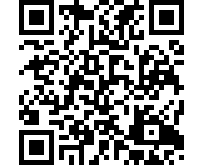A few weeks ago, I was supposed to be on a panel about this two weeks ago. I got sick and couldn’t do it but I did a bunch of digging around/thinking about it.
A friend just asked me why no-one has risen through the noise. I didn’t think about that particular issue but here are some thoughts I did have:
NFC is not new – Nokia for a while – I don’t think it will make a big difference in the use of mobile payments. (Contactless payments aren’t new either, Citibank/MTA, EZ Pass and so on have been using them for a while)
Overall Issues – trust – Who do people want to put their trust in: carriers? banks? manufacturers?
Big winner likely: Amazon – will retailers trust – consumers say they are the most reputable company in the world.
Other Players:
Isis – carrirers – T-Mobile, AT&T and Verizon
Google – android – probably open – Citibank and Mastercard
Apple – ios – probably will take a big cut
Apple is probably required – as much as I hate to say it – not friendly to small developers – donations
What works now: – points the way towards what will work in the future
Square – fits with what people already do – friendly to small merchants – attaches directly to phone – simple pricing
Starbucks – App linked to CC – Just scan it and the backend system will charge your CC – Control in hands of consumer
Samsung – Olympics – London 2012 big trial
Business Card Transfers
I wonder/fear it will look pretty much like how we exchange contact information now (via paper business cards).
Standards didn’t catch on – security warnings about bluetooth – same will happen with NFC??
NFC will have to be the most secure tech in the world. There is nothing more juicy for a cracker to hack something that is used to transfer money. People will react with viscerally as well. The local news channels will run piece after piece. The wikipedia page is already filled with potential exploits: eavesdropping, data modification, relay attack, lost property, …





